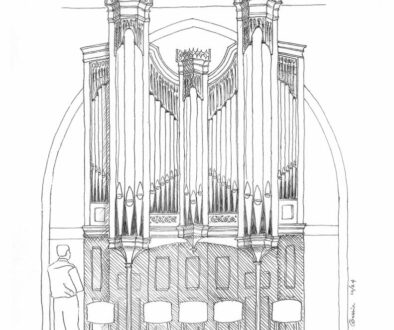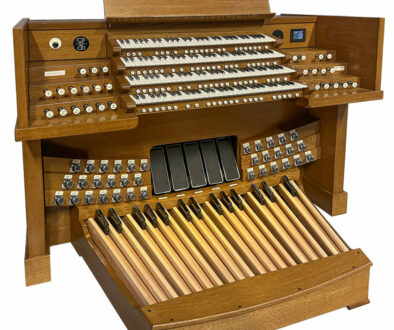Caring for a Treasure
It is always an honor to rebuild an historic instrument from a celebrated firm. The story of this Estey organ involves passionate advocates and smart designers. The result is an organ that has been providing a great musical benefit to the church for nearly a century.
Estey opus 2886 was installed at the Seventh Avenue Presbyterian Church in San Francisco in 1930 by Felix F. Schoenstein & Sons. Strapped by financial woes of the Great Depression, the church had limited resources and struggled to pay for what little organ they could buy. They needed only the most practical instrument, leaving no room for any specialty stops. They needed an organ which is beautiful and useful.
James B. Jamison, then-sales representative for Estey, devised a stop list focusing on 8’ tone and power through reeds. The voices and scales were chosen carefully to create ensembles that stand on their own. Jamison speaks to the success of these choices in a letter to his colleagues at Estey. He says that when drawing the diapasons alone with Cornopean coupled at 16-8-4, “…you get an effect that should cost $10,000…. It really is exceptional.” In addition to the carefully-chosen voices, the organ is entirely enclosed for maximum versatility.
After Jamison finished the organ, letters show the church loved its beautiful tone from the first hearing. That love continues to the present day, and when Mary Morganti – a member of the congregation and professional archivist – heard the organ, she knew she wanted to help care for it. Her advocacy on its behalf, coupled with the steadfast support of longtime Lead Pastor Jeff Gaines and Director of Liturgical Music Luba Kravchenko, led to a restoration project for the aging organ to bring it back to top condition.
As part of her growing interest in Estey opus 2886, Morganti traveled to the Estey Museum in Battleboro, VT. There she met with the museum curators and even volunteered to go through company archives. The records she and others at the museum uncovered were valuable to us in our restoration efforts; they also shed light on Jamison’s particular interest in this job. After the church had raised the funds, they engaged us to restore the organ, a chance for us to connect with our heritage and breathe new life into an organ we installed nearly 100 years ago.
The whole organ was removed to our Benicia plant while the chambers were cleaned, painted, and modified for easier tuning access. In the course of the restoration, we improved some design elements that had severely limited technician access in the chamber. We also remedied mechanical and tonal issues that had arisen over decades of playing. Re-installed, the organ is easier to maintain and therefore in better tune.
Upon returning the organ to its chambers, we were struck by the beauty and practicality of this little instrument. From the incisive, magical Salicional to the “$10,000” Cornopean, the organ is full of color that is useful to the church. Of special note is the 16’ Dulciana, a perfect example of a gentle string that speaks promptly and beautifully across its whole compass. In short, this organ is designed practically and voiced beautifully. It was our pleasure to help the organ sing again, and we are confident the people of Seventh Avenue will treasure opus 2886 for another 100 years to come.
Bryan Dunnewald
Schoenstein & Co.

